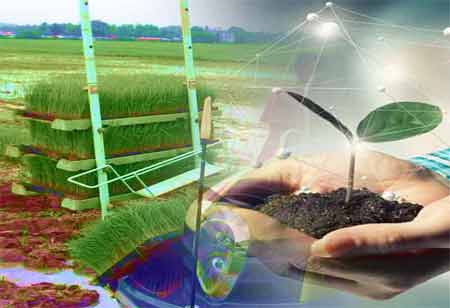Thank you for Subscribing to Agri Business Review Weekly Brief
How Innovation is Reshaping Agriculture's Sustainable Future
Agriculture plays an important role in the global economy. The industry provides jobs for a significant portion of the world's workforce

By
Agri Business Review | Tuesday, January 16, 2024
Stay ahead of the industry with exclusive feature stories on the top companies, expert insights and the latest news delivered straight to your inbox. Subscribe today.
The use of synthetic fertilizers and pesticides, as well as large-scale industrial farming techniques, has negatively impacted the environment, public health, and food security throughout the world. A sustainable food system benefits everyone on earth by providing a more resilient, equitable, and environmentally sustainable food system.
Fremont, CA: Agriculture plays an important role in the global economy. The industry provides jobs for a significant portion of the world's workforce. The uses of synthetic fertilizers and pesticides, monoculture, and large-scale industrial farming, however, have negatively impacted the environment, public health, and food security.
The solution to these challenges lies in sustainable agriculture. A more resilient, equitable and environmentally sustainable food system benefits everyone.
Agriculture's sustainable future
The Food and Agriculture Organization of the United Nations (FAO) estimates that unsustainable agricultural practices account for approximately 70 percent of freshwater withdrawals and 80 percent of deforestation around the world. A global transition to sustainable agriculture practices is imperative to address these issues. This can be done by:
Supply chain digitalization for agriculture
Digital agriculture solutions can help farmers increase efficiency, reduce waste, and increase profitability. A precision agriculture system, such as drones, sensors, and satellite imagery, can provide farmers with real-time data on soil moisture, nutrient levels, and crop health. The use of supply chain management tools, such as blockchain, can increase transparency, accountability, and traceability in the food supply chain. Farmers will receive fair prices for their products as a result of this.
Implementing agroforestry practices
Agricultural landscapes are complemented by trees and shrubs through agroforestry. Farmers can earn more income through this approach by enhancing soil fertility, reducing erosion, and increasing biodiversity. By producing timber, fruits, and other non-timber forest products, this is achieved.
Climate change vulnerability reduction and adaptation
Droughts, floods, and storms are expected to increase in frequency and intensity because of climate change. Farmers can reduce vulnerability to these impacts by harvesting rainwater, diversifying their crops, and breeding drought-resistant varieties. Climate change resilience can improve farmers' adaptive capacity, reduce risks, and safeguard livelihoods.
IPM (Integrated Pest Management) techniques
The aim of IPM is to minimize harm to human health and the environment by using multiple strategies to manage pests, diseases, and weeds. Biochemical controls can be used, as can crop rotation, resistance varieties, and cultural practices. A natural ecosystem can be protected and crops can be grown with IPM.
Nature-based solutions and regenerative practices
The goal of regenerative agriculture is to build soil health, increase biodiversity and sequester carbon in ecosystems. The approach incorporates practices like conservation tillage, cover crops, crop rotation, intercropping, and agroforestry. Farming systems that incorporate these practices will improve soil fertility, increase yields, and reduce greenhouse gas emissions.
Precision agriculture through innovative technologies
Farmers can make informed decisions and reduce risks by using innovative agricultural technologies like weather forecasting, remote sensing, and predictive analytics. It is essential that agriculture transitions to sustainable practices. The growing population, climate change, and increased demand on natural resources make it urgent to adopt sustainable agricultural practices.
Crop rotation, integrated pest management, agroforestry, and circular agriculture can contribute to achieving these goals. Farmers can ensure efficient and sustainable farming practices through the adoption of digital agriculture solutions.





